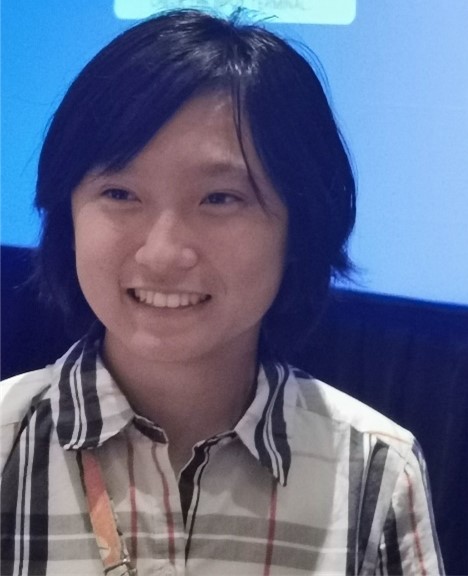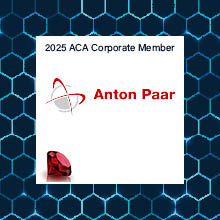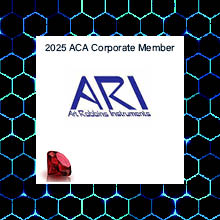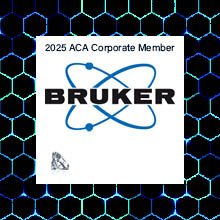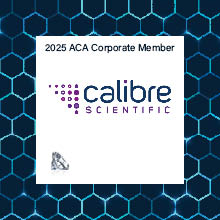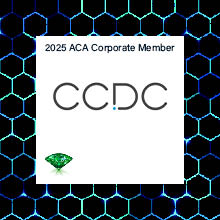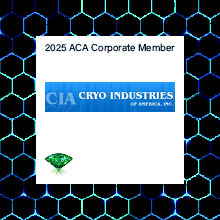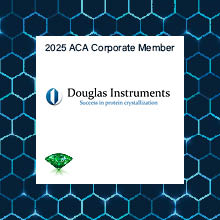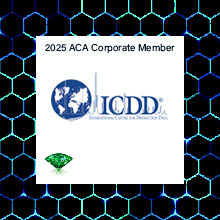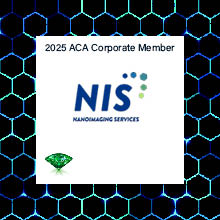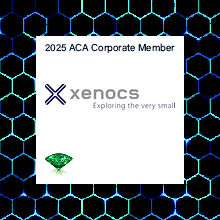- Home
- About ACA
- Publications & Resources
- Programs
- Annual Meeting
- Membership
- -History-
- ACA Video Library
ACA Early Career Scientist Spotlight-24
Personal Statement I watched as my father micro-pipetted solvents and compounds onto the coverslip. With one swift motion, he sliced the gel around the first well on the plate and expertly affixed the coverslip on top of the well with the compounds facing inside. “This,” he told me, “is hanging-drop crystallization.” The single drop that was suspended on the coverslip looked so small. It was even smaller than a drop of water. But it was from drops like these, he said, iterated over hundreds or thousands of times with distinct buffer conditions that could lead to the ideal crystal, which could reveal everything about the structure. I was only 14-years old at the time, but from the look on his face and the conviction in his voice, I knew that this was very important. Several days later, after the crystals grew, I observed them under the microscope. Unfortunately for me, many of the crystals were subpar and small. The wells either had very tiny crystals or wisps of cloudy micro-sized spots. Sometimes they did not even have anything. Discouraging as this was, I had to learn how to overcome these disappointments. I had to learn to take the situation, figure out what went wrong, and move forward with a better plan. (In retrospect, it almost seems as if the solution may have been too saturated or the temperature fluctuations may have been present, leading to rapid nucleation.) As we tried different buffer conditions and small molecule crystallizing agents in an iterative fashion and as we began experimenting with the incorporation of the selenium functionality in the DNA oligonucleotides, the DNA crystals began crystallizing into larger-sized crystals (which would be more suitable for neutron diffraction) while maintaining its fast crystallization rates. As I marvelled at the beautiful, faceted crystals shining underneath the light of the microscope, I could not believe how these beautiful objects, like masterful pieces of art, could contain potential keys to solving special structures of nucleic acids as well as nucleic acids in association with their protein complexes for structure-based drug design.
Now, I am in college, majoring in biochemistry, TA-ing chemistry labs for other undergraduate students, and working on an undergraduate thesis research project with the Oyelere Group. As a TA, I absolutely love to answer my students’ questions and teach them how chemistry works and why it is applicable to our everyday lives. As an undergraduate researcher, I very much enjoy working on my project, which is focused on designing and synthesizing dual-acting compounds for prostate cancer research. My PI and my graduate student mentor are great sources of inspiration for me. They also are very supportive of the work that I do, and I very much appreciate their dedication and encouragement. I have learned so many organic chemical synthesis skills thanks to their kindness and patience. However, I have more recently felt that there is an aspect of structural biology and medicinal chemistry that I could (and should) apply to my research project (and the lab’s direction in general), which could serve as an additional layer to our research focus: crystallographic studies between the lab’s synthesized compounds and their target proteins. Such studies could provide experimental evidence that could support the results of our past biological assays, which have been suggesting the potency of several of our compounds against prostate cancer cells. I recalled again my crystal-growing club from high school. I had led my group to organize over seven different crystal-growing events for K-12th students, such as crystal-growing competitions and crystal-growing summer camps. Our student responses often are enthusiastically positive, claiming how exciting our events often are and how much fun the students usually have observing the growth of their crystals. The ACA was even so kind as to provide us with over $1000 in in-kind donations to support our crystal-growing community efforts. Cumulatively we have had over 350+ student participants across our events, and we had presented at several STEM teacher conferences, telling the teachers about why crystal-growing and crystallography are important in the first place. What the high school club did lack, however, (primarily due to the lack of funding and resources) was the research aspect itself. At the high school club, we grew a variety of crystals and experimented with introducing different conditions, such as the inclusion of glow-in-UV highlighter ink inside the crystals. However, the materials we used for crystal-growing often were inorganic compounds, such as salt, aluminum potassium sulfate, copper sulfate, etc. That was why after I incorporated the group (SNAA Research Society, also known as STARS) as a nonprofit organization, I began organizing the college club branch at Georgia Tech with the aim to provide our college club members the opportunity to learn about and practice protein crystallography research. This way, biochemistry and pre-health undergraduate students interested in research and medicinal chemistry can receive basic training in crystallography, develop strengthened connections with fellow pre-health undergraduate researchers, and can serve as a source of assistance (if desired) to faculty researchers and their research groups on specific crystallographic studies, helping to foster student-faculty research connections and strengthening networking for future research collaborations and studies. Ultimately, this STARS GT branch takes the nonprofit to the next level by: (1) providing students with the opportunity to perform protein crystallography research and potentially assisting research labs with their crystallographic studies, (2) providing students with the chance to volunteer at our STARS annual crystal-growing competition and summer camp, and (3) providing students with the opportunity to present about their crystallographic and community work at the annual ACA conference. The college branch was recently launched in the fall 2023 semester. Much of our lab work would require basic crystallization materials, such as well-plates and certain proteins. Because some of these materials are costly, we are applying for 501(c)3 official non-profit status so that we may apply for and receive tax-deductible donations. If our protein crystallography research mission resonates with you and if you would like to provide monetary or in-kind donations to help support our work, please feel free to contact us. We appreciate your contributions and support. For January 2024, we have invited an Emory crystallography professor Dr. Liu as a guest lecturer for our four-hour hybrid event that includes a lecture, lunch, and protein crystallography workshop. We are also currently looking for two or three other guest lectures for the remainder of the 2024 spring semester as well as potential board members for our nonprofit organization. If you may be interested in either of these two roles please also feel free to contact us. As I look back on what our group has accomplished so far and what we plan on accomplishing in the future, I often recall my first experience with macromolecular crystallography. Growing suitable, large crystals can be challenging at times, but being able to see the beautiful large crystals and being able to know that they can be used for structure-based drug design motivate me on my journey of my research. At the time, my father had led me there at the starting point of that crystallographic research path. Now, through my research society, I plan to lead my friends, classmates, and underclassmen to that same starting point and show them the splendors of crystallography, just as how my father did for me. |

